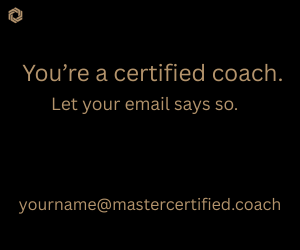Why Embodied Leadership is a Sustainable and Empowering Management Style
What makes a leader?
Is it superior communication skills? Being highly organized? The ability to influence and inspire change in an organization and other people? Good leadership is sometimes attributed to confidence, critical thinking, and being able to make good decisions under pressure.
There’s no denying that these are all extremely useful management skills. But if you want to be more than just a “good enough” leader, there’s another set of skills that are paramount.
The Current Path to Leadership — and What’s Wrong with It
It’s a familiar story. A promising young executive is quickly promoted through a company. Despite completing the best management and leadership courses, they lose the respect of people who were once their colleagues and friends.
Unfortunately, it’s easy for executives to lose their interpersonal skills as they climb the corporate ladder. With mounting responsibilities and deadlines, their work becomes heavily mental — making decisions, developing strategies, and coping with extreme time pressure.
Their learning-by-osmosis (observing the managers and leaders around them) is supplemented by courses and professional learning experiences that are often heavily cognitive. While these have their benefits, they lack the experiential element.
Most organizations rely on and invest their learning and development (L&D) budgets in cognitive-based learning and theorizing. These are not small sums. In the United States, corporate training spending has seen a significant increase in 2022, exceeding $100 billion USD. However, while the typical leadership programs that companies invest in include titles like “being” or “becoming” a leader, they seldom involve putting you in a state of being or feeling.
The outcome is senior managers who know how to become a leader rather than how to be a leader. They have the knowledge, but it’s not embodied — even though research has shown that we learn quicker and retain lessons better through our bodies.
What Does Embodied Leadership Look Like?
I recently started working with Kate, an ambitious lawyer who has her eyes fixed on the top management positions within her firm (for confidentiality purposes, Kate is not her real name). She is extremely good at her job, but as Kate takes on increasingly senior positions, she fears she’s not having the level of impact she needs to keep progressing.
By observing Kate presenting in different scenarios, I noticed that she was shrinking her physical self in meetings, overextending, and leaning forward. While she may have been saying all the right things, she was showing up to others as apologetic, which, of course, is not a trait valued in competent lawyers. Taking a cognitive- or theory-based course on improving her communication skills wouldn’t have revealed where Kate needed to make changes.
And this is what we mean by embodied leadership.
It’s how you habitually show up in a way that is consistent with who you want to be and how that impacts your mood.
It’s how your colleagues react to and organize themselves around your energetic and physical presence.
To get started, ask yourself the following questions
- When people speak, are you actually listening?
- Does your body language communicate approachability, or do you have an invisible wall around you?
- Do you act or react when faced with challenges?
- Is there a way for you to show up that also inspires others?
How can You Learn to Become an Embodied Leader?
Embodied leadership can’t be taught by PowerPoint. Change happens through the body, so therefore you must practice taking aligned action with your body.
Embodied learning is also known as kinesthetic learning, and it’s all about being aware of how you take action and its impact on yourself, your goals, and others. You develop your leadership skills through practice, presence, and continued commitment — not just cognitive learning.
As a quick exercise, try standing or sitting like you’re talking to your colleagues. Lean to one side, then the other. Now scratch your head, stroke your chin, or gesture emphatically with your hands. Does that feel different from how you usually present physically? How are you being perceived?
Working on Presence is for Everyone
While embodied leadership training is ideal for helping senior professionals navigate the work environment, the skills are beneficial to everybody, across all settings. All learning is more sustainable and “sticky” when the focus is on embodiment rather than cognitive understanding. Somatic (or bodily) awareness is integral in cultivating emotional intelligence, presence, and exploring what leadership truly looks like for you.
Disclaimer
The views and opinions expressed in guest posts featured on this blog are those of the author and do not necessarily reflect the opinions and views of the International Coach Federation (ICF). The publication of a guest post on the ICF Blog does not equate to an ICF endorsement or guarantee of the products or services provided by the author.
Additionally, for the purpose of full disclosure and as a disclaimer of liability, this content was possibly generated using the assistance of an AI program. Its contents, either in whole or in part, have been reviewed and revised by a human. Nevertheless, the reader/user is responsible for verifying the information presented and should not rely upon this article or post as providing any specific professional advice or counsel. Its contents are provided “as is,” and ICF makes no representations or warranties as to its accuracy or completeness and to the fullest extent permitted by applicable law specifically disclaims any and all liability for any damages or injuries resulting from use of or reliance thereupon.
Authors
Post Type
Blog
Audience Type
HR & Organizational Leaders, Managers/Leaders Using Coaching Skills
Topic
Coaching Skills for Leaders, Coaching in Organizations
Related Posts
From Check-the-Box to Culture Shift: Becoming a Sustainable Coaching Culture
There’s a quiet revolution happening inside organizations — and it doesn’t roar. It listens. It…
Cultivating Coaching Cultures That Shape Individual Contributors Into Leaders
In my coaching work with organizations, I continue to see a recurring…
Measuring Coaching ROI and the Ripple Effect
A Moment of Realization: When Coaching ROI Becomes Visible “I never envisioned…








